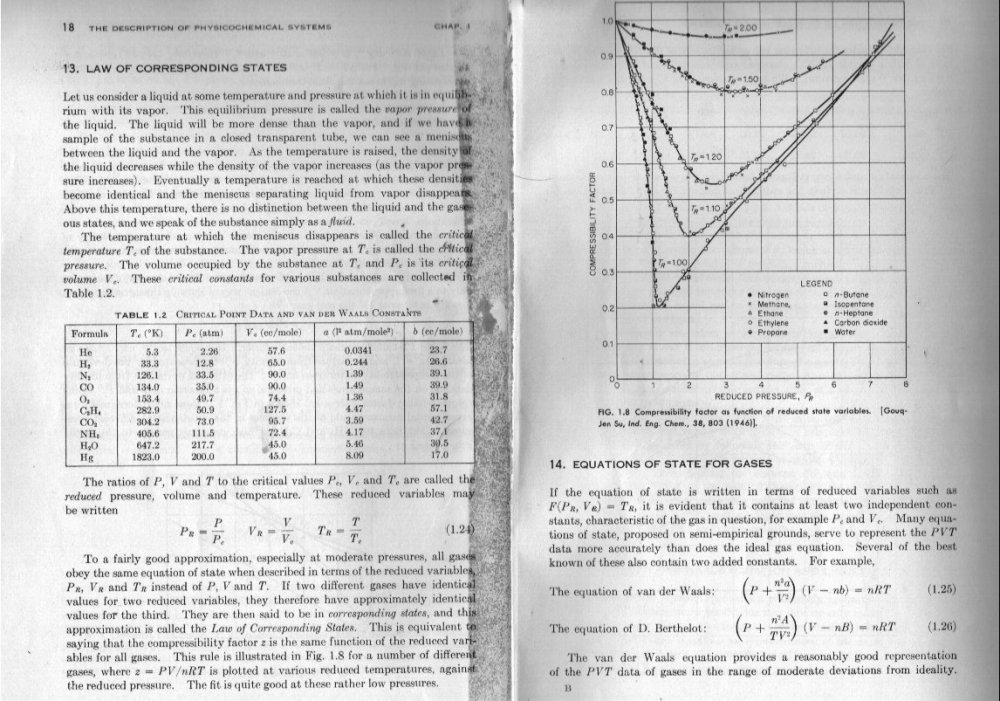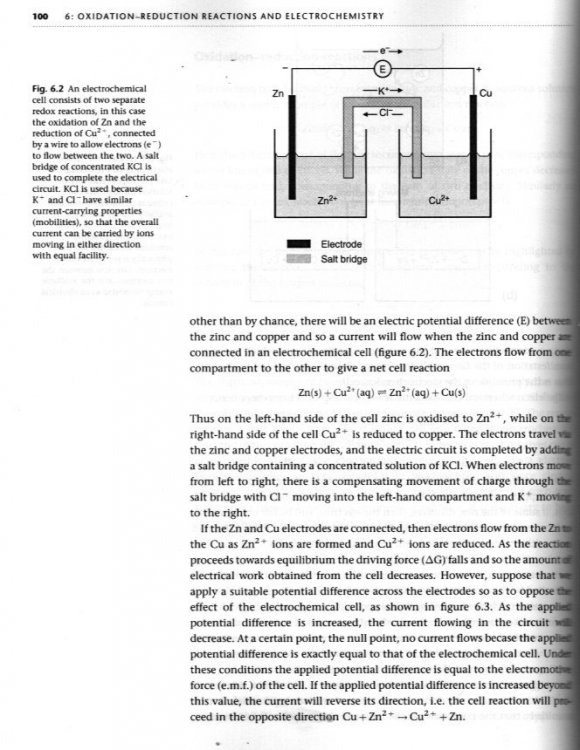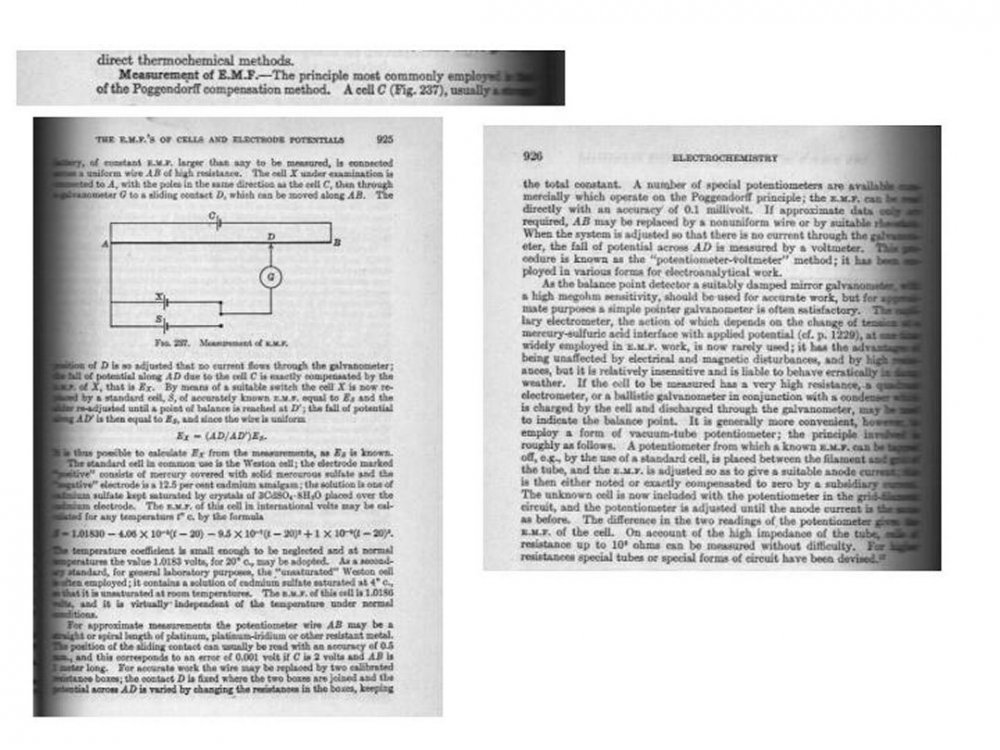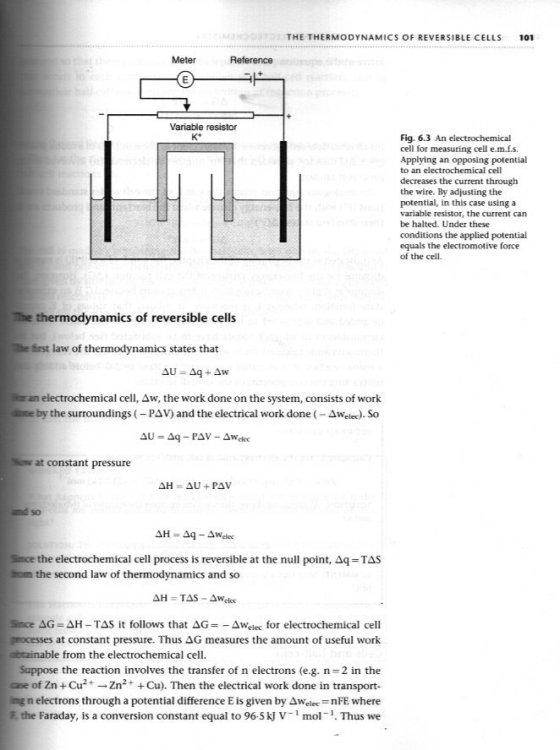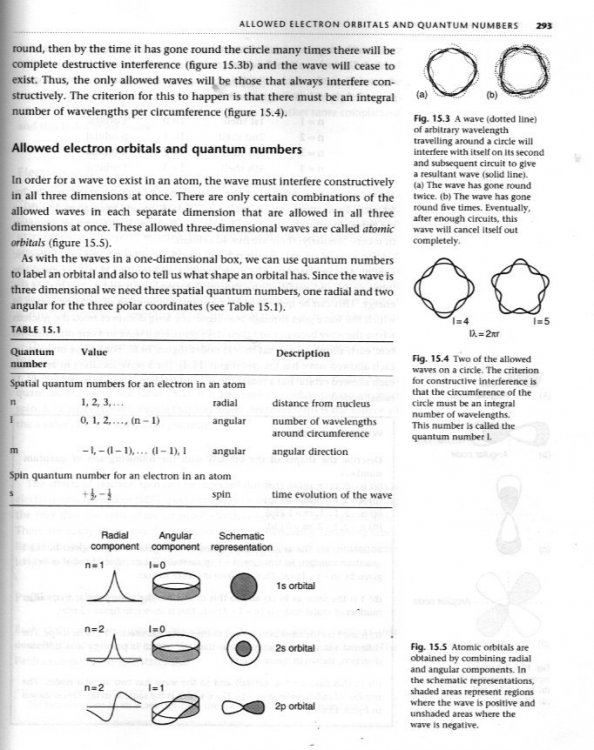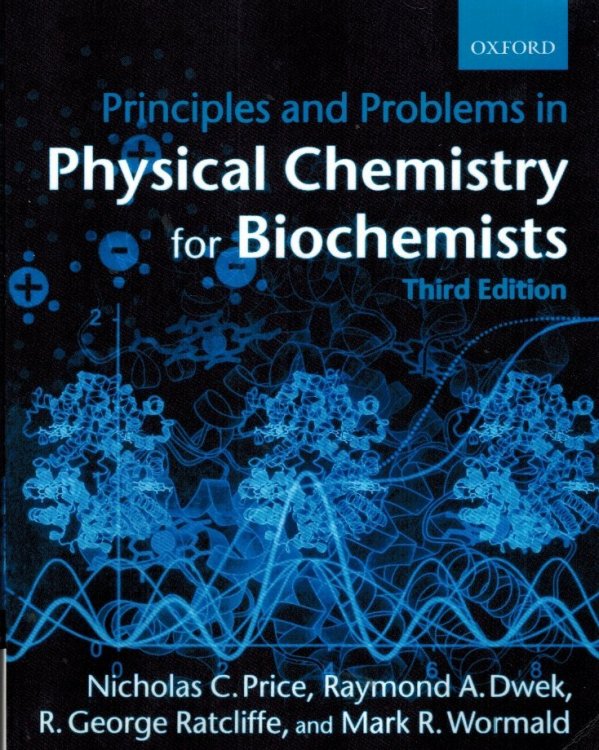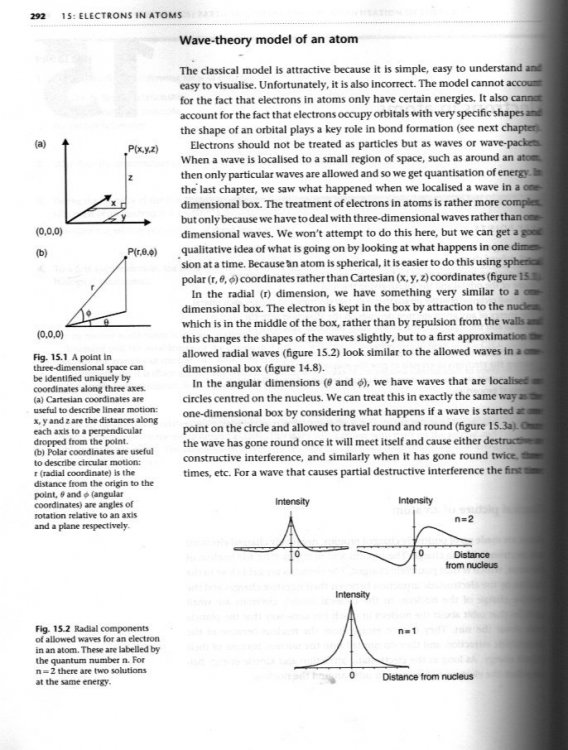-
Posts
18313 -
Joined
-
Last visited
-
Days Won
104
Content Type
Profiles
Forums
Events
Everything posted by studiot
-
The best things are found in a bottle marked Laphroaig or a bottle marked Schnaps, not on the internet.
-
Fair question. No I don't think there are any hard and fast rules, English is sometimes very flexible. Looking through some definitions on the internet I see that no one seems to include that old requirement A sentence is more than just a group of words which includes subject and a verb. A sentence has to make sense. "Earthworms twist uphill." Is just a collection of random words that do not form a sentence. Referring now to your example question Yes I think that is technically correct, since the singular and plural distinguishes in this case. But you are right to point out that such a situation is not always the case. But it is poor style, as the which clause seems added as an afterthought. In such cases the standard advice is to either break the prose up into more sentences. Or to reorder the words. SCP-4380 secretes protein-rich fluid, often transported by an insect, containing a reproductive spore. Technically correct, but ambiguous and clumsy. Better to add a connective SCP-4380 secretes protein-rich fluid, often transported by an insect and containing a reproductive spore. or better use of 'which' SCP-4380 secretes protein-rich fluid, which contains a reproductive spore and is often transported by an insect. Alternatively change to two sentences. SCP-4380 secretes protein-rich fluid, which contains a reproductive spore. The fluid is often transported by an insect. Notes I assume that it is the fluid, not the SCP-4380, which contains the spore. I have changed to singular to remove the singular plural distinguishing information.
-
I really can't say if the opening post is any more clear than the non existant pdf. If it doesn't generate energy then.. If it does then... Surely your analysis should be able to predict which?
-
Now that we have reached this point let us review your beginning. Consider two observers in relative motion (which might be zero) v between them. Observer 1 is located at the origin O of the coordinate system x,y,z,t. Observer 2 is located at the origin O' of a second coordinate system x',y',z',t'. As the second system origin O' passes through and is coincident with the first system origin O, it happens that observer 1 emits a pulse of light. Observer 1 sees a spherical light front travelling out from his source in all directions and obeying the equation x2 + y2 + z2 = c2t2 Where c is the velocity of propagation of light as measured by Fizeau et al. Now the questions arise What does observer 2 see? And what is the resulting equation for his observation? And how is this connected to what observer 1 sees along with his equation. This is where any hypothesis must introduce a postulate and you say the postulate introduced by Einstein is incorrect. So my question to you is What is your alternative hypothesis and what conclusion (equation) does it come to? Note that so far c is just a symbol for a constant in the equation distance = speed x time It is nothing more than this and at this point has no special significance nor can it descibe the mechanism of travel.
-
Well you got to hand first prize for free thinking entrepreneurial spirit to the Americans. Cheese holidays from cheesejourneys.com a cheese travel agent. Cheese portraits from http://mikegeno.com/ A cheese artist.
-
Glad you got it now though I did originally point to at least one infinite subset of N - The set N itself. In fact it is just awesome how many subsets there are and how many are infinite This is what put up the cardinality of the power set to that of the continuum.
-
Thank you for your response to my question. You very clearly mean quite different things in your use of the words group velocity and phase velocity, and even perhaps velocity. Do you offer any sort of base definitions? I have disentangled your statements of your own theory from you statements of misunderstanding of conventional Physics Conventionally we do not derive the wave nature of light from the wave equation, nor have we ever done this. The attribution of a wavelike nature comes from two directions Historically the first clues were experimental, diffraction effects such as appear the umbra and penumbra of shadows and many others. Then along came this guy Maxwell and his famous four equations concerning electric and magnetic fields (none of which are wave equations) and he further discovered that if he played around mathematically with them as simultaneous equations and applied a bit of calculus he could combine them into one differential equation which had the same mathematical form as what we now call 'The Wave Equation' That is he discovered that combined electric and magnetic fields have the capacity to produce and support the coupled oscillations of wave motion. He further noted that such motion would have the same characteristic speed as recent (to him) measurements indicated light travelled at. He therefore proposed in the mid 1800s that his oscillations and light were one and the same. We now know that that is not enough, but it was pretty good for his time. Half a century later, Einstein carefully considered the relationship between light, regardless of how it works or is propagated, and both Maxwell's laws and the laws of Mechanics and came up with his first theory of relativity which included a velocity which was also had the same value as that measured (by then more accurately) and predicted by Maxwell. We now call that velocity c. Since you have not fully answered my question about the difference between phase velocity and group velocity in a vacuum (have you now dropped this requirement, you didn't mention it lately). Conventionally according to Maxwell they are both the same and both equal c in a vacuum. It doesn't actually matter in Relativity since the mechanism of propagation is irrelevant to relativistic considerations.
-
But you didn't answer my question so how can you understand that? Did you mean the power set of N ?
-

How to do this question regarding competitive enzyme?
studiot replied to JonasAbrahamWee's topic in Homework Help
So what have you done so far? Have you written any equations for Km and Ki ? Have a look at the example in this thread and try to use it as a model. How many unknowns do you have so how many equations do you need to solve the system? Click on the box to get to the other thread. -
If you mean the power set of N and N are not in bijection that is not suprising. The power set is always larger than the original set. It is a set of subsets and contains individual subsets, one for every member of the original set (N) along with other sets such as N itself. N can be put in bijection with R. https://www.google.co.uk/search?ei=Y7aMXePVKO2G1fAPztqtUA&q=power+set+of+N&oq=power+set+of+N&gs_l=psy-ab.3..0l5j0i30l5.1166.1838..3256...0.2..0.1118.1570.4-1j7-1......0....1..gws-wiz.......0i71.Aa6pQ8WKKpI&ved=0ahUKEwijk6nQxe7kAhVtQxUIHU5tCwoQ4dUDCAo&uact=5
-
There is no hard and fast rule about what can be called a 'state' Supercritical could be so considered since it is a condition where there is no distinction between liquid and gas. Moore (Physical Chemistry) calls this a fluid. FYI the meniscus is the boundary between liqid and gas when there is a distinction. Note that 'super' in this context means above - it is the temperature that is above the critical temperature. It does not mean 'extra special'.
-
As I understand it, a magnetic field can be created by running a current through a wire and an emp can be created by pulsing a current through a wire. Aside from the duration of time between the two I don’t see any other differences. https://en.m.wikipedia.org/wiki/Electromagnetic_pulse An electromagnetic pulse (EMP), also sometimes called a transient electromagnetic disturbance, is a short burst of electromagneticenergy. Such a pulse's origin may be a natural occurrence or man-made and can occur as a radiated, electric, or magnetic fieldor a conducted electric current, depending on the source. If your view that an emp is different to a magnetic field because an emp is a segment of a magnetic field then I can see how you see them as different things an emp is a segment of a magnetic field. Here is another view. In the scenario of a wire carrying a current, before the current commences let’s assume there is nothing around the wire. When the current commences, wether the current is an alternating current or direct current, at the commencement of the current a magnetic field will populate the space around the wire starting at the wire and moving outwards from the wire at the speed of light. A direct current will produce a magnetic that doesn’t induce a current in a stationary wire but if you push the wire through that magnetic field then it will induce a current in the wire being pushed. However, On the other hand, the magnetic field from an alternating current will induce an alternating current in a stationary wire in that magnetic field. A current restive to the motion will be induced in either case the, it’s only what’s moving that is the difference. In the direct current’s magnetic field the wire has to move to induce a current and in the alternating current’s magnetic field the it’s the magnetic field that’s moving which leads me to the following analogy. If you consider a cross section view of the wire carrying an alternating current it could be viewed as dropping pebbles (to represent an alternating current) in to a pond from the top down view, where the pebbles impact the water represents the wire and the ripples represent the changing magnetic field emanating outwards from the wire. Considering that before the current commences there is nothing around the wire, but when the current commences the magnetic field be it from a dc or ac current will emanate from outward from the wire at the speed of light. In this analogy though, the water molecules are the magnetic field and the energy passing through the water molecules can be seen as the ripples. The water molecules do not move away from the centre but the water molecules do oscillate as the energy passes through them. In this analogy the magnetic field is basically a medium to carry energy. In a dc current the water would remain flat. So I can see why you say the magnetic field from a dc current doesn’t carry away any energy. Could this mean that a magnetic field from an alternating current has mass but a magnetic field from a dc current does not have mass? appogies for the font size difference I don’t know how to change the font size in this text. [FIXED] The difference is right there in your reference and also in th bit of what swansont said that I underlined. The difference is the electric field. An EMP is a combination of two fields, an electric field and a magnetic field. You have chosen to discuss only a magnetic field and have been answered as such. Both your reference and swansont also indicate the different between steady state conditions and changing conditions - the word transient appears in both. A transient can last forever, it has nothing to do with duration. A transient is about change of state / condition A steady state is about, well a steady state ie an unchanging state/condition. So yes both these are true but 1) A magentic field is just that a magnetic field - steady or changing. 2) An EMP is a combination of continually changing electric and a magnetic fields. Does this help ?
-
I sympathise. You would not have this difficulty if folks would use the terminology that is in all my electrical engineering texts. (Rotating) Electric machinery operates due to the interaction of two magnetic fields (along with some conductors). One of those fields is generated in the "stator" which strangely enough does not move (rotate) This is therefore rightly called a static magnetic field. The other field is generated in - guess what - the rotor, which rotates, rotating its magnetic field with it. This is called the rotating magnetic field. However either or both those fields may be the result of electric current and pulsating if AC. That is the field is not constant in time at any given point in space. But the pattern of pulsing repeats endlessly. So the current and field is called steady. Note you cannot usefully use the word constant with AC since the average value of AC is zero so a phrase like "the AC current is on average constant" is worthless.
-
Me too, which is why I posed it as a question (more than once) rather than stating the result. The stated aim is to offer an alternative to relativity that results in the same mathematical consequences, but for different reasons. Therefore we must work from the initial postulate through the derivations to see if this is the case . This has prooved rather slippery and elusive. The OP appears to want to jump from postulate to final conclusion without the intermediate working, offering instead just assurances.
-
Don't you think QM in any form is irrelevent here? The OP has not introduced it. The OP's description is about purely classical and continuum matters, viz the velocity of light and (special?) relativity. He has also failed to see that the mechanism of propagation of light is actually irrelevent to relativity. (Although I am not saying that relativity has no consequences for those properties of light)
-
I have carefully avoided the topics needing more difficult maths. Also quantum theory as it affects Chemistry needs to be worked through a bit more. But it is important to realise that whilst Physicists deal largely with atimic theory, this is of little use to Chemists, who deal largely with molecules. And molecules have structure and bonding to consider. Further some of the states of matter (eg metals and ionic crystals) amount to giant 'molecules' the size of the substance. Following on from topic (1) we have topic (9) (9) What types of bonding can you identify? Chemists are also interested in reactions so let us do a bit of chemical maths (10) Investigate the reaction, the equilibrium constant, the solubility constant, the dissociation constant and the law of mass action and the mathematics of chemical reactions. Here is an example you should be able to follow but ask if need be. Hydrogen Flouride partially dissolves in water as hydrogen ions and flouride ions. If the equilibrium constant is 6.7 x 10-4 calculate the concentration of the species that form when 1 mole of HF is dissolved in water to give 1 litre of solution. So firstly we write down the (dissociation) reaction. HF = H+(aq) + F- (aq) From this we can see there are three unknowns since the dissociation is not complete (HF is a weak acid) The unknowns are:- The concentrations of the hydrogen ions, the flouride ions and the remaining hydrogen flouride molecules. Are you familiar with the notation of putting the species inside a square bracket to denote concentration? Thus the concs are [H+], [F-] and [HF]. Three unknowns so mathematics tells us we need three equations. 1) From the definition of the equilibrium constant [math]\frac{{\left[ {{H^ + }} \right]\left[ {{F^ - }} \right]}}{{\left[ {HF} \right]}} = {K_a} = 6.7x{10^{ - 4}}[/math] 2) Electroneutrality or charge balance. The solution starts off electricall neutral so the number / concentration of negative charges must equal the number of positive [math]\left[ {{H^ + }} \right] = \left[ {{F^ - }} \right][/math] 3) Mass balance. The total number of moles of flourine must be the same as we started with and we are told that we started with 1 mole of HF ie 1 mole of flourine. [math]\left[ {HF} \right] + \left[ {{F^ - }} \right] = 1[/math] Using those three equations you should be able to come to the conclusion that [H+] = [F-] = 0.0256M and [HF] = 0.97 M
-
Just to add some more to the original purpose of this thread. Here are some extracts from (a) Price Physical Chemistry for Biochemists as noted in your other thread (b) an older book Physical Chemistry by Glasstone and These are all about potentiometric methods, to the accuracy you were looking for. In the 1960s we had a slide wire potentiometer in high school along with a Weston Standard Cell This was the method I was thinking of. My apologies for the poor quality scans
-
It is very clear from your answers to several responders that you have confused others and not made yourself clear. In particular this sentence is just plain wrong. I accept that I may have misunderstood your meaning but as it stands it is wrong because An individual mass may have any (valid) charge independent and regardless of the rest of the universe and any other masses or charges in it. In particular it may possess that charge when isolated from the rest of the universe. But A body has no gravitational acceleration when isolated from the rest of the universe. The term is then meaningless. Therefore the one case is not similar to the other, but quite different. So would you please rephrase what you really mean in unambiguous English so we can all stop wasting time on a futile argument.
-
You also mentioned complicated quantum mechanics. Learning your first QM fromAtkins is pretty daunting. So I have a suggestion. Sometimes a gentler introduction aimed at another discipline can be very helkpful, especially in the initial stages. This current Phys Chem book from Oxford can be obtained very cheaply second hand from Amazon, Abe or Ebay, and serves this purpose admirably. I have included a couple of pages from the quantums ection, which is the easiest simple explanation I have seen. The book is also similarly clear in other chapters. As regards my number (2) No I was meaning things like vapour pressure, osmosis, Raoult's law, depression of freezing point, elevation of boiling point...... Many of these properties have a common basis in that they depend upon the number of particles. But this will become clearer when I add the last few topics (much of which can be found in Price et al.
-
Forgive my niggle, but there are similarities as well as differences. But they are most certainly not the same.
-
Let me pour some oil here. Strange is talking about a body force by an external agent (gravity) Such body forces due to an external agent act on the body as a whole (ie directly on each and every particle of the body) and their effect can be described by a single concentrated force acting at the centre of mass of the body, which is the sum of all the individual actions on each body particle. mistermack is talking about a surface force (due to pressure) which acts only on the surface of a body and is transmitted (wholly or partially) to other parts of the body by internal forces. In this case the body needs to be subdivided into adhjacent control volumes to model the effect. So yes the internal pressure forces are caused by gravity, but at any section the pressure force from below balances the gravitational force from above. Weve been through this one before, quite recently.
-
Yup that is a fair picture +1
-
But this is not true. 1) For gravitational attraction the force depends upon the mass and is independent of any charge. 2) For electric attraction the force depends upon the charge and is independent of any mass. 3) However for both the acceleration depends only upon the mass since acceleration = Force/mass. That is you must first calculate the force between the objects, then calculate the resulting acceleration, not the other way round. I believe it was this thread where I have already pointed out that the electrostaic force between say a lithium ion and a chlorine ion is the same as the force between a cesium ion and a chlorine ion. But the acceleration imparted to the lithium ion by the chlorine ion is 19 times a great as the acceleration imparted to the cesium ion.
-
Thank you for attempting to reply to my question. I'm sorry you side stepped the issue, but OK let us concentrate on light in a vacuum. First problem (and it is a big one) There is no such thing as a perfect vacuum anywhere in the known universe. So any of the experiments you are referring to as supporting your proposition must automatically be ruled out if you insist on only considering a vacuum. Second problem. Can you explain to me the difference between the phase and group velocities of light in a vacuum? I ask because you apparently wish to substitute one for the other in conventional formulae. I look forward to your explanations
-

Gas concentration vs temperature in a closed volume
studiot replied to dino2's topic in Applied Chemistry
That's a much better description of what you are doing. Is this for gas chromatography or how are you measuring the phosphine concentration? I don't have any experience of phosphine chemistry but Lee has Latimer and Hildebrand say Though no details are given. Perhaps someone with more knowledge will add to this??


